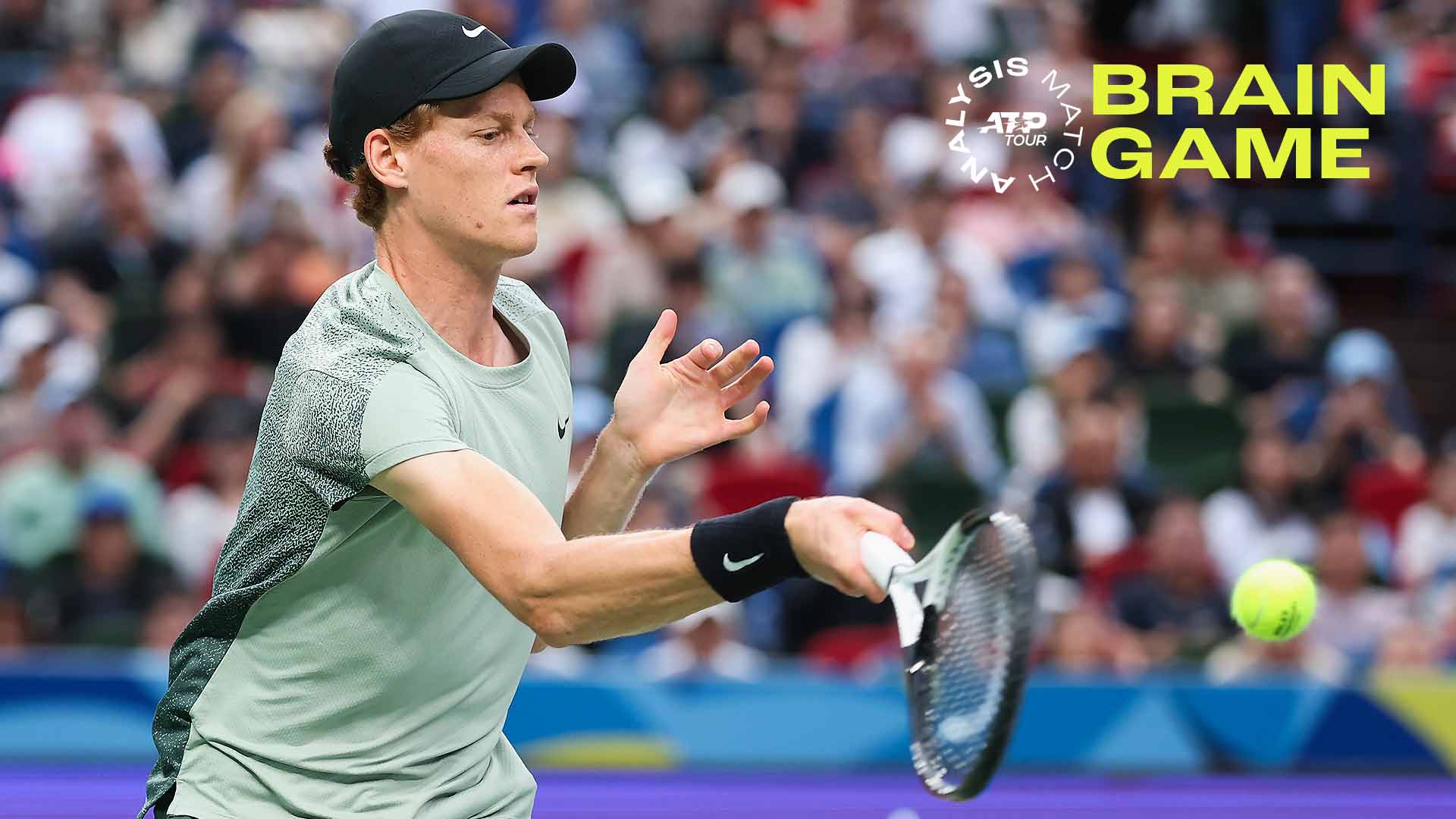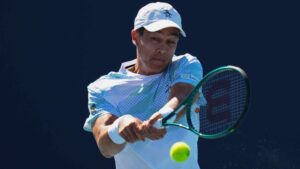
Brain Game
The statistical area that Sinner dominated against Djokovic in Shanghai
Analysis of the Masters 1000 final in China
October 13, 2024
Lintao Zhang/Getty Images
By Craig O’Shannessy
The beginning of the point was not the problem for Novak Djokovic. It was the end.
Jannik Sinner defeated Djokovic 7-6 (4), 6-3 in the Rolex Shanghai Masters final, winning just five more points (65-60) in total than the Serbian. In a match that showed parity in all statistics, the Italian dominated one critical area: the ability to finish points with winners.
Winners: Sinner
– Aces = 9
– Right = 6
– Backhand = 4
– Voleas = 4
– Total = 23
Winners: Djokovic
– Aces = 4
– Right = 4
– Backhand = 1
– Voleas = 3
– Total = 12
Sinner hit 23 winners to Djokovic’s 12. There was no other match statistic where there was such a big gap between the two players. Both committed 23 unforced errors in the match. Both put 82 percent of their reverses into play. Djokovic, in fact, put slightly more forehands on the court (86% vs. 84%) and hit them harder (81 mph vs. 79 mph) on average during the final.
But when it came time to finish off the good work, it was Sinner who proved to be twice as good as Djokovic. By isolating baseline points, Sinner totaled 10 winners to just five for Djokovic. The Serbian won the battle of the longest exchanges of nine strokes or more by eight points to six. It was inconsequential for the final result in Shanghai. When Sinner needed to finish the point, his movement, shot selection and court positioning proved to be superior to the former number one.
A micro-battle that highlighted the strategic advantage Sinner enjoyed in the match can be seen with the first shot taken after the serve, commonly known as Serve +1.
Total forehand strokes after the serve
– Sinner = 62% (28/45)
– Djokovic = 42% (15/36)
Sinner hits from the bottom after the serve
– Right = 61% (17/28)
– Backhand = 53% (9/17)
Djokovic hits from the bottom after the serve
– Right = 53% (8/15)
– Backhand = 52% (11/21)
Sinner dominated with +1 serve forehands in this match, hitting this shot 62 percent of the time. Djokovic had great difficulty finding his forehand after serve, hitting it just 42 percent of the time. Sinner won 61 percent of his points with +1 serve forehands, while Djokovic only won 53 percent. This had a negative flow effect for the rest of the point for the Serbian. Too many +1 serve backhands equal too much baseline parity in Djokovic’s service games. That makes it increasingly difficult for the Serb to craft winners at the end of the point.
Djokovic also turned his attention to the front of the court to apply pressure on Sinner, but this turned out to be one of the rare matches where Djokovic was unable to build a winning margin at the net. They only won 45% (5/11) of the points on offense, while Sinner earned five of the six points won.
It has been almost 12 months since Djokovic won his last ATP Tour title at the Nitto ATP Finals in Turin last November. At 37, recent Paris Olympic gold medalist Djokovic is quickly approaching the twilight of his career. This match identifies where his younger opponents will forge an advantage against him.
It’s not about building the point. It’s about finishing it.
Source: https://www.atptour.com/es/news/sinner-djokovic-shanghai-2024-final-brain-game


